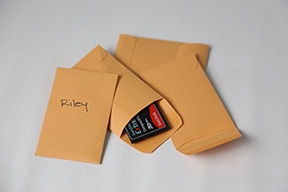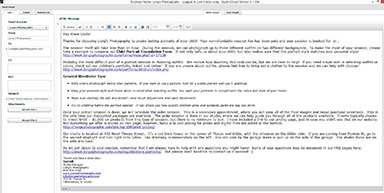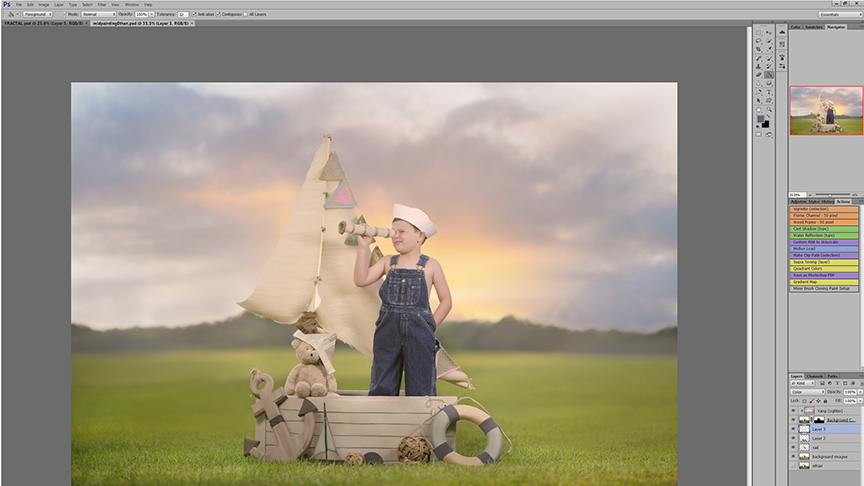10 steps to better workflow
Shave hours off your workday and spend that time marketing your photography business.
• November 2016 issue
You, like me, are wearing many hats: entrepreneur, artist, accountant, tech support, stylist ... . It doesn’t take long for all those varied responsibilities to consume your day. You can have some great business improvement ideas, but if you barely have time to deliver client images efficiently and are spending nights and weekends working, how will you find time to implement new marketing programs?
Most photographers struggle to describe their workflow because it’s not something they’ve paused to document or perhaps even think about. But they should. Workflow is more than image processing. It’s every single task, large and small, that goes into running your business. From emails to taxes, packing gear to delivering products, your workflow is the way you execute all the tasks required for the health of your business.
Who has time to think about the flow of tasks when you have a huge stack of them waiting to be executed? You do. Sit down and write out your entire workflow. Seriously. Do it. It will surprise you how many non-photography-related tasks are consuming massive amounts of your time—tasks that generally don’t make you any money. You make money when you’re behind a camera and when you’re selling to a client.
When you streamline your workflow, you maximize your time to work with clients on tasks that make you money and you spend less time on tasks that don’t. (If you happen to be independently wealthy and don’t want or need to make more money, then streamline your workflow if only so you can spend more time on the beach sipping cold umbrella drinks.)

Once you’ve written down your workflow, document how long it takes to do each task. Then think about how you might do each one more efficiently. Here are 10 shortcuts that save me time:
1. Use coin envelopes to hold used memory cards. The little envelops are just big enough to fit several cards, then seal closed. They’re incredibly inexpensive, and you can label each envelope with the client’s name so you know at a glance which cards can be used again.
2. Pack your gear exactly the same way every time you leave the studio. This will train your brain to detect quickly whether anything is missing. Unpack your gear the same way when you return to the studio, always placing batteries on the charger so they’re ready to go when you are.
3. Use a cloud-based app like Evernote for “to do” lists, shopping lists, and any other notes. That way you always have that information handy on your phone and computer.
4. Schedule a block of time each morning and afternoon for email, and check it ONLY then. Go a step further and always respond to an email the first time you read it. This saves you the time not only of rereading but also of giving attention to the same issue several times before responding. Keep emails organized in folders for reference, keeping only those emails that still need your attention in your inbox. This makes it clear at a glance which ones you need to address ASAP.

5. Create template emails that answer the most common questions clients ask. By spending a few minutes making the email reflect your brand and explaining things in the best possible way, you not only save time on each email you send, but you also ensure the consistent quality of your responses.
6. Learn key commands for Photoshop and Lightroom. That way you don’t have to scroll the screen to find the menu or action you need.
7. Move your Photoshop tool panel to the right side of the screen so it’s next to your other palettes. With everything in one area, you save seconds on each task by not moving back and forth across the screen.
8. Set deadlines for yourself and communicate them to your client. This is particularly helpful if you fear you may not have enough personal accountability to meet them without such a commitment. Simply having a deadline pushes you to stay on task and work efficiently.
9. Consider a studio management program to help organize all client details, your calendar, and invoices. Have confirmation emails scheduled to go out automatically to clients.
10. Sign up for my imaging USA pre-con. Join me for a half-day program devoted to workflow and efficiency.
By finding ways to shave seconds and minutes off routine daily tasks, you’ll accumulate hours each week that can be invested in the growth of your business. Want to market to more high-end clients, start a partnership with a local boutique, approach local dance schools for their business, or simply spend more time with your friends and family? Now you have the time. You may not be able to add hours to the day, but working more efficiently can save you hours to put toward the betterment of your business.
If you think you can’t save enough time to make this workflow exercise worthwhile, I challenge you to get a good accounting of what your time is worth. Most of us didn’t start a photography business because we wanted to earn minimum wage, but a shocking number of photographers make that or less. On an average week, how many hours are you working: 40, 60, 80? Most small business owners log far more than 40 hours a week, and photographers are especially guilty of working at all hours of the day and night. Let’s say you average a 60-hour week and you brought in $40,000 last year. That’s $13.89 per hour that comes into your studio. And that’s before you account for taxes, product costs, and overhead. See how that minimum wage number isn’t looking so crazy?
PPA offers tools and information to help you calculate overhead and pricing so you can learn how much you need to make and how much each job costs you. By taking an extra step you can refine your business to ensure you make the most out of every job you book. Take a month and keep a log of the time you spend on your business and which tasks were done for which clients. At the end of the month, you’ll see how much time you spent working each week and determine if you’re pricing your work appropriately for each kind of job.
For example, if a maternity session takes 10 hours to complete from the first inquiry to the session, retouching, ordering, and delivery of products, and a family portrait session takes just five hours to complete, then you should be making twice the revenue from the maternity session. If not, then you have options: Raise the session fee, create a higher minimum order for maternity sessions, stop photographing maternity sessions, market yourself only for family sessions, or spend less time on the maternity sessions.
Spending time refining your workflow might not be the most glamorous thing to do, but it has the power to change the landscape of your business. The I-wish–I-had-time-to list will become shorter as you make time to complete those tasks that bring you closer to reaching your long-range goals. Just as you wouldn’t build a house without a strong foundation, you need a business that stands on the firm ground of a refined, thoughtful workflow.
Linda Long is the owner of Long’s Photography in Tallahassee, Florida. In January 2017, she’ll present a pre-convention Imaging USA session on workflow.
Tags: business operations photoshop

